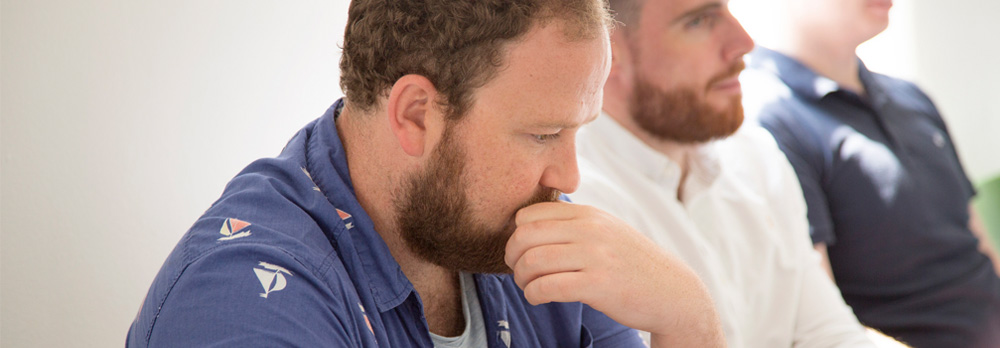
Should Brands Be Using Facebook Live?
28 March 2017, Ben Blackler
As a marketer, it’s very hard to get a handle on the potential of Facebook Live.
On the one hand, you have the digital mavens who are trumpeting it as the new indispensable gizmo in the marketer’s toolkit. If you google ‘should brands use Facebook Live’ you’re greeted with a page full of articles that assume you’ve skipped the ‘why’ and already moved onto the ‘how’ – tips on how to make compelling live video without too much justification for why you should be doing so.
On the other hand, there are the arch sceptics – like Marketing Week columnist Mark Ritson – who’s attitude is summed up succinctly in this extract from his recent article on the topic:
And there’s little in-between these two extremes.
So who’s right? To understand that, we need to start by digging into Facebook’s motivations for launching Live in the first place.
Why Did Facebook Launch Live?
Despite its phenomenal success, Facebook’s management perceives it has two nagging problems – one real and one, in truth, largely imagined.
The ‘real’ problem relates to a decline in the sharing of personal information on the platform. If reports are to be believed, this sort of activity was down by about 20% in 2014 vs. 2015 and down a further 20% last year.
This has been put down to a phenomenon known as ‘context collapse.’ In short, our Facebook followings have become so large that we’ve become uncomfortable sharing personal information with such a disparate group. Facebook wants us to share more, and believes that ‘going Live’ could be a means of doing that – ‘Live’ could be the new ‘selfie’, so to speak. Tests have apparently shown that Live has more potential to reverse this decline in personal sharing than all of the other recent initiatives Facebook has tried (‘On this Day’ etc) combined.
The second, more paranoid motivation, is the fear of becoming the next MySpace. Try as he might, Mark Zuckerberg hasn’t successfully managed to stamp out Twitter and, of particular concern to him, Snapchat. The profile of user that has been lured away from Facebook to Snapchat is the exact profile of user most likely to go live – mainly college and high school students. And, of course, Snapchat (and Twitter) have livestreaming features.
So, live wasn’t created with brands in mind – it was created as a reaction to a lack of personal sharing and to ward off any mass defection to other platforms. There’s little doubt that brands can benefit if live video consumption becomes the new normal, but it may be that they need to step back a little at first and see how the medium evolves.
How Popular Is It?
But isn’t there evidence that Facebook Live is massively popular already? Who hasn’t heard of Candace Payne’s ‘chewbacca mask’ video which originated on Facebook Live and has garnered over 140 million views?
Or Buzzfeed’s ‘exploding water melon’, which drew a live audience of over 800,000?
In both cases, you need to dig below the headline numbers to understand what’s going on.
Let’s look at ‘chewbacca mom’ Candace Payne first, and her 140m views. That’s great, but very few people beyond her immediate circle of friends would have seen that video live – most views came after the event as the content started to go viral. And many of those views were as the result of news websites picking up the content and embedding it on their sites. You could argue she’d have achieved the same fame if she posted it on YouTube, and made a stack more money out of it to boot.
Buzzfeed’s exploding water melon – a 45-minute video that featured two presenters putting an ever increasing number of rubber bands around a water melon to see how many would make it explode – is a very different proposition That achieved a concurrent 800,000 views at its peak, and in excess of 10 million altogether. There’s no doubt that’s impressive – particularly the scale of the audience that watched it live – but it comes with a few caveats.
Firstly, you can’t compare digital video views with TV viewing figures at present because the metrics are so different. An audience of 0.8m isn’t to be sneezed at, even in TV terms. But TV audiences are averaged per minute – a much higher yardstick than for digital which will count any view over a couple of seconds. If you were to convert Buzzfeed’s 800,000 into a TV audience equivalent, the figure would likely plummet to 10-15% of that total.
Secondly, Buzzfeed’s figure is one from a publisher rather than a brand trying to sell goods and services. When you look for brand success stories on Facebook Live, the most commonly quoted examples are Chevrolet’s electric car live launch at 57,000 viewers…
…and Dunkin’ Donuts ‘tour of the DD kitchen’ at 40,000. Hardly figures to predict the imminent demise of TV, and made less impressive if the more stringent ‘average audience per minute’ metric is applied.
Evolution or Revolution?
The final point to make is that livestreaming isn’t new in the brand world. Some have been doing it for years, particularly the big fashion brands for their SS and AW shows – Burberry was one of the pioneers in this field. You could argue that Facebook has made it more accessible to the masses, but if a brand manager hasn’t seen a reason to live stream to date with the pre-Facebook Live tools at his/her fingertips, the past year hasn’t changed the video landscape so much that he/she should feel the need to suddenly dive in.
That’s not to say that Facebook Live isn’t an important development and isn’t one that shouldn’t be monitored very carefully by brands – it most definitely should. If live sharing does become the new ‘selfie’ then ever more people will be open to the same approach being taken by brands.
But hyperbolic claims that Facebook Live is about to rival TV amongst younger demographics are more than a little premature. It shouldn’t be forgotten that most younger audiences are driving the trend away from traditional linear viewing and towards a more ‘on demand’ model. That’s not to say they won’t consume ‘Live’ but that has to be a pretty compelling reason to watch there and then.
Integrating some trials of Facebook Live into your social strategy certainly makes sense – especially if you’re planning a live event that you think your Facebook followers may be interested in. But we’re not yet at the time that you should rushing out and hiring a ‘Live Video Manager.’
Not unless rubber bands and exploding watermelons are ‘on brand’ for you.
See more articles from Social Media


